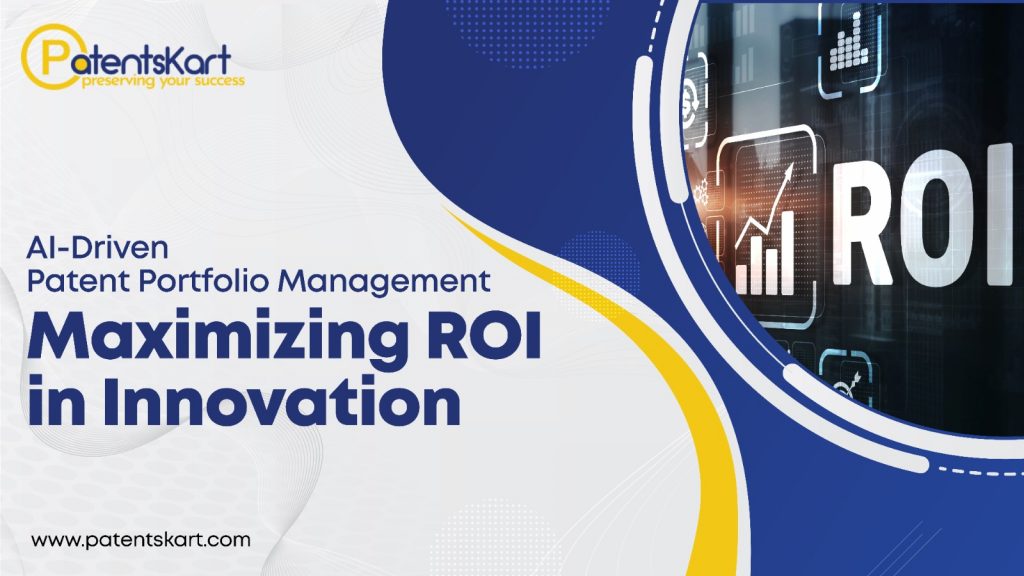In today’s fast-paced world, innovation is the lifeblood of any successful business. Companies are constantly looking for ways to stay ahead of the curve, and a robust patent portfolio is one way to protect and capitalize on their groundbreaking ideas. But as technology evolves, so do the methods of managing these valuable assets. Enter artificial intelligence (AI)—a game-changer that’s reshaping how we handle patent portfolios, making it easier to maximize returns on innovation. Let’s dive into how AI is transforming patent management and how it can help you get the most bang for your buck.
The Role of AI in Modern Patent Management
AI is everywhere these days, from the way we shop online to how we manage our finances. And now, it’s making waves in patent management too. With the power of AI, companies can automate and enhance many of the tedious tasks associated with managing a patent portfolio, freeing up time and resources for what really matters—innovating.
Automating Patent Searches and Analysis
Remember when patent searches meant hours of digging through mountains of paperwork or databases? Those days are fading fast. AI can now automate these searches, scanning through vast amounts of data to find relevant patents, conduct prior art searches, and even predict the likelihood of a patent being granted. It’s like having a super-smart assistant who never gets tired and always delivers accurate results. This means you can make better, faster decisions about which innovations to pursue and protect.
Enhancing Patent Valuation and Licensing Strategies
Understanding the value of your patents can feel like a guessing game. But with AI, you don’t have to guess anymore. Advanced AI tools can help you assess which patents in your portfolio are the most valuable and which might be underperforming. This information is gold when it comes to deciding whether to license, sell, or enforce your patents. It’s all about making your portfolio work smarter, not harder.
Maximizing ROI Through Strategic Patent Portfolio Management
Managing a patent portfolio isn’t just about collecting patents and hoping for the best. It’s about being strategic—using those patents to boost your company’s competitive edge and bottom line. Here’s where AI comes in handy again:
Identifying Gaps and Opportunities
AI doesn’t just help with what you have; it can also show you what you’re missing. By analyzing your portfolio alongside those of your competitors and the broader market, AI can highlight gaps and opportunities you might not have seen otherwise. This means you can direct your R&D efforts towards areas with high potential return on investment, ensuring your innovation dollars are well-spent.
Optimizing Patent Maintenance
Keeping up with patent maintenance can feel like juggling—there are just so many balls in the air. AI can make this juggling act a whole lot easier. By analyzing the value of each patent, AI can help you decide which ones are worth the upkeep and which ones you can afford to let go. This not only cuts down on costs but also ensures that your portfolio is lean, mean, and primed for maximum ROI.
Challenges and Considerations in AI-Driven Patent Management
Of course, AI isn’t a magic wand. While it offers amazing benefits, it also comes with challenges that you need to be aware of to truly harness its power.
Data Privacy and Security
When you’re dealing with sensitive intellectual property, keeping your data secure is non-negotiable. AI systems are powerful, but they also need to be protected from unauthorized access and potential breaches. Think of it like a high-tech vault—you want to make sure your most valuable assets are safe inside.
Bias and Accuracy in AI Algorithms
AI is great, but it’s not perfect. The accuracy of AI algorithms depends on the data they’re trained on. If that data is biased or flawed, the AI’s recommendations will be too. That’s why it’s important to regularly check and update your AI tools to make sure they’re giving you the best advice possible.
The Future of AI in Patent Portfolio Management
Looking ahead, AI is only going to become more integral to patent portfolio management. Imagine a world where AI not only manages your portfolio but also drafts patents, predicts future trends, and integrates seamlessly with other business systems. The possibilities are endless, and the future is exciting.
Conclusion
AI-driven patent portfolio management is here, and it’s changing the game for companies looking to maximize their return on innovation. By automating processes, providing valuable insights, and optimizing your portfolio, AI helps ensure that your patents work as hard as you do. But like any tool, it’s important to use it wisely. Stay informed, stay vigilant, and keep pushing the boundaries of what’s possible. After all, innovation waits for no one.







